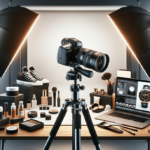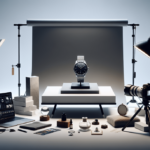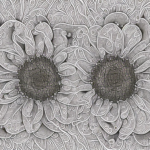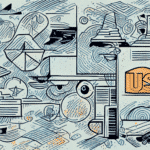The Importance of Attention to Detail in Photography
Photography is a profound art form that hinges on the keen observation of details. It's about capturing moments that narrate a story and evoke emotions in the viewer. Attention to detail is pivotal in photography as even the slightest nuances can transform a good photograph into an exceptional one. This article delves into the significance of meticulousness in photography and offers practical tips to master this craft for stunning results.
Mastering Composition and Lighting
Composition
Composition is the backbone of any compelling photograph. It involves the arrangement of elements within the frame to create a balanced and harmonious image. According to a study by the Professional Photographers of America, effective composition can significantly enhance the visual appeal and storytelling power of a photo. Key aspects include:
- Rule of Thirds: Dividing the frame into a 3x3 grid and placing the subject along these lines or their intersections.
- Leading Lines: Using natural lines to guide the viewer's eye towards the main subject.
- Framing: Utilizing elements within the scene to frame the subject, adding depth and focus.
Lighting Techniques
Lighting is arguably the most crucial element in photography. It influences the mood, depth, and texture of an image. Understanding different lighting techniques can elevate your photography:
- Natural Light: Utilizing sunlight to create authentic and vibrant images. According to the Nature Education, natural light provides a wide range of tones and is ideal for outdoor photography.
- Artificial Light: Using studio lights, flash, or continuous lighting to control and manipulate the light source.
- Modifiers: Employing diffusers, reflectors, and gels to alter the quality and direction of light.
Enhancing Your Photos with Backgrounds
Understanding the Role of Background
The background plays a vital role in framing the subject and setting the context of the photograph. A well-chosen background can complement the subject, while a cluttered or distracting one can detract from it. According to National Geographic, the background should enhance rather than overshadow the main subject.
Choosing the Right Background
Selecting an appropriate background involves considering factors such as color, texture, and context. Here are some tips:
- Color Coordination: Choose colors that contrast with or complement the subject to make it stand out.
- Texture and Patterns: Opt for subtle textures to add depth without drawing attention away from the subject.
- Contextual Relevance: Ensure the background aligns with the story or message you intend to convey.
Creating a Clean and Simple Background
Simplicity often leads to more impactful photographs. To achieve a clean background:
- Use a shallow depth of field to blur out distractions.
- Choose plain backdrops like solid-colored walls or minimalist settings.
- Remove any unnecessary elements from the shooting area.
Capturing Genuine Moments: Candid Photography
Tips for Candid Photography
Candid photography focuses on capturing natural and unposed moments. To excel in this style:
- Avoid directing or posing your subjects; instead, let them be themselves.
- Be patient and observant, ready to capture fleeting expressions and actions.
- Use discreet equipment to remain unobtrusive.
Capturing Genuine Emotions
Emotions are the heart of storytelling in photography. Building a connection with your subjects can help in capturing authentic feelings. Techniques include:
- Establishing rapport before the shoot.
- Encouraging natural interactions.
- Focusing on moments that reveal the subject's personality.
The Art of Storytelling Through Candid Photography
Every photograph tells a story. Candid shots can encapsulate narratives that resonate with viewers. To enhance storytelling:
- Capture sequential moments that depict a story arc.
- Incorporate elements that provide context and depth.
- Use composition and lighting to highlight key aspects of the story.
Essential Tools and Techniques for Photographers
Essential Tools for Every Photographer's Kit
Having the right tools is fundamental for capturing high-quality images. Essential equipment includes:
- High-Quality Camera: A DSLR or mirrorless camera with manual control settings.
- Lenses: A variety of lenses (e.g., prime, zoom) to suit different shooting scenarios.
- Tripod or Stabilizer: To ensure stability and reduce camera shake.
- Memory Cards and Batteries: Reliable storage and power sources are crucial for uninterrupted shooting.
Must-Have Camera Accessories for Better Photography
Additional accessories can enhance your photography experience and output:
- Remote Shutter Release: Allows you to take photos without physically pressing the shutter button, reducing camera shake.
- Flash or Light Meter: For better control over lighting conditions.
- Camera Bag or Case: Protects your gear and makes it easier to transport.
The Benefits of Shooting in RAW Format
Shooting in RAW format offers greater flexibility in post-processing. RAW files retain all the data from the camera sensor, allowing for extensive edits without compromising image quality. This is particularly beneficial for adjusting exposure, white balance, and color grading. According to Adobe, professionals prefer RAW for its superior quality and editing capabilities.
Post-Processing and Editing Techniques
Importance of Post-Processing
Post-processing is where photographers can fine-tune their images to perfection. It involves adjusting various elements such as brightness, contrast, color balance, and sharpness. Proper editing can enhance the visual impact and ensure that the final image aligns with the photographer’s vision.
Tools for Editing
Several software options are available for photo editing:
- Adobe Photoshop: A comprehensive tool for detailed image manipulation.
- Adobe Lightroom: Ideal for batch processing and organizing photography workflows.
- Capture One: Known for its robust RAW processing capabilities.
Best Practices for Editing
To maintain the integrity of your photographs during editing:
- Work on duplicate files to preserve original images.
- Adjust exposure and contrast to highlight key elements.
- Enhance colors to make the image more vibrant without over-saturation.
- Use sharpening tools sparingly to maintain a natural look.
Advertising Photography
Delivering What You Promise
Advertising photography aims to showcase products or services in the best possible light. It requires precision and alignment with the brand’s message. Key strategies include:
- Shooting products in context to demonstrate usage.
- Using clean and simple backgrounds to focus attention on the product.
- Employing strategic lighting to highlight features and details.
Techniques for Effective Advertising Photos
To create compelling advertising images:
- Understand the target audience and tailor the imagery accordingly.
- Maintain consistency with the brand’s visual identity.
- Use high-resolution images to ensure clarity and professionalism.
Conclusion
Attention to detail distinguishes a good photographer from a great one. By focusing on the smallest elements, dedicating time to perfect each shot, and understanding the various components that contribute to a compelling image, you can create stunning photographs that tell a story and evoke emotions. Embrace continuous learning, experiment with different techniques, and remain patient and observant. Remember, photography is an art that thrives on practice, dedication, and an unwavering eye for detail.






















